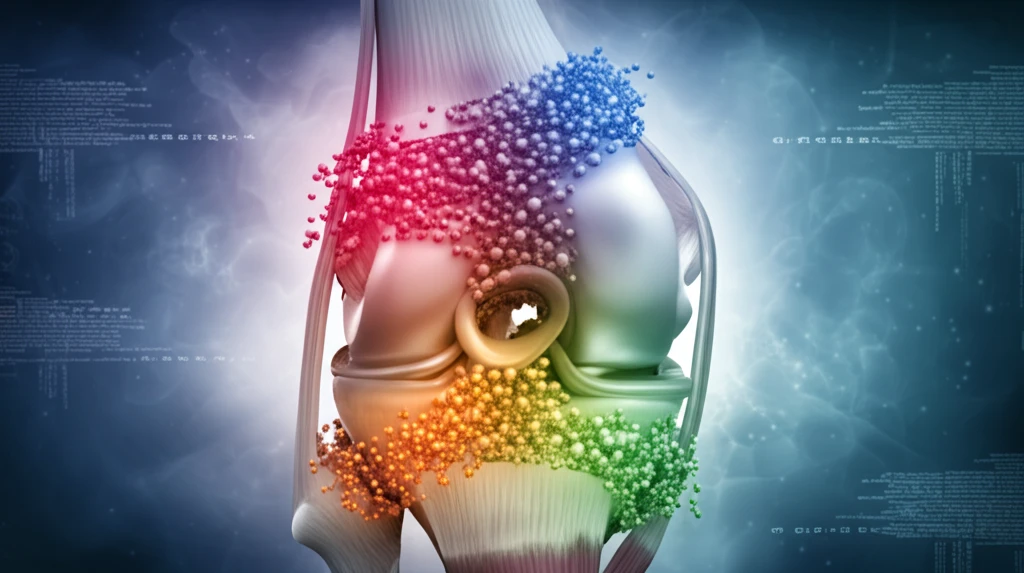
Decoding Knee Pain: How Glycosaminoglycans Impact Your Joint Health
"Uncover the regional variations and mechanical roles of glycosaminoglycans (GAGs) in the knee meniscus, and how this knowledge can lead to better joint health."
Knee pain, a common complaint among adults, often stems from issues within the meniscus, a crucial cartilage structure in the knee. The meniscus acts as a shock absorber, distributing load and providing stability. But what if the key to understanding and treating many knee problems lies within tiny molecules you've likely never heard of? Glycosaminoglycans, or GAGs, are complex carbohydrates that play a vital role in the health and function of your knee joints.
While knee injuries and conditions like osteoarthritis are frequently discussed, the specific role of GAGs in maintaining the meniscus's health is often overlooked. New research is shedding light on how these molecules contribute to the resilience and performance of the knee. This could revolutionize how we approach joint care, from preventative measures to advanced tissue engineering.
This article dives into the groundbreaking research on GAGs and their regional functions within the knee meniscus. We'll explore how GAGs affect the knee's ability to withstand compression, tension, and the daily wear and tear of movement. Understanding these mechanisms can pave the way for innovative treatments and a proactive approach to joint health.
What Are Glycosaminoglycans (GAGs) and Why Are They Important for Knee Health?

Glycosaminoglycans are long chains of sugar molecules found throughout the body, particularly in connective tissues like cartilage. In the knee meniscus, GAGs attract and retain water, providing cushioning and lubrication. They work in conjunction with collagen, the main structural protein in the meniscus, to create a resilient and flexible tissue.
- GAGs are essential for maintaining the meniscus's hydration and resilience.
- They work with collagen to provide structural support and flexibility.
- Different types of GAGs exist, each with slightly different roles.
- Maintaining healthy GAG levels is crucial for preventing knee pain and injury.
Empowering Your Knee Health Through Understanding GAGs
The future of knee health lies in understanding the complex roles of molecules like glycosaminoglycans. By recognizing the importance of GAGs and their regional functions, we can develop more effective strategies for preventing injuries, treating existing conditions, and engineering new solutions for damaged tissue. Staying informed and proactive about your joint health can lead to a more active, pain-free life.
